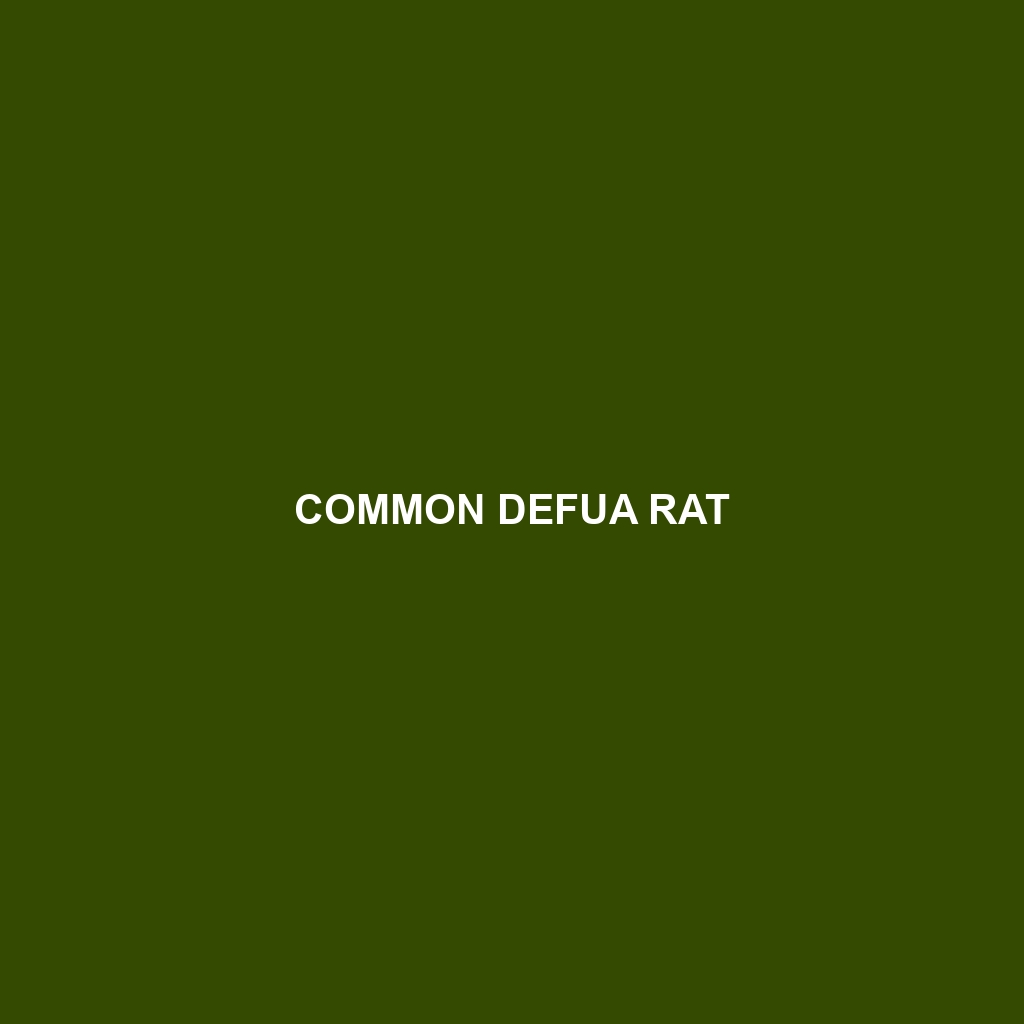Species Description: Common Defua Rat
Common Name: Common Defua Rat
Scientific Name: Dephua dephua
Habitat
The Common Defua Rat, primarily found in the dense, moist forests of West and Central Africa, inhabits a variety of environments including tropical rainforests, secondary forests, and bushy areas. This species is particularly abundant in countries such as Ghana, Nigeria, and Cameroon, where it thrives in areas with ample vegetation and cover.
Physical Characteristics
The Common Defua Rat is a striking rodent that typically reaches lengths of about 20 to 25 centimeters, excluding the tail. It features a robust body covered in short, coarse fur that varies in color from dark brown to gray, often with lighter underparts. Its long, scaly tail adds an extra 15 to 20 centimeters to its length and is used for balance. Notable distinctive features include large, rounded ears and prominent incisors that are characteristic of the species.
Behavior
This rodent is primarily nocturnal, engaging in most of its activities at night. The Common Defua Rat is highly social, often found living in small family groups or colonies. It exhibits curious behavior, frequently exploring its environment, which has sparked interest among scientists studying social interactions among rodents. The species is also known for its agility and ability to climb trees in search of food and shelter.
Diet
The Common Defua Rat is an omnivorous species, feeding on a diverse diet that includes fruits, seeds, nuts, and occasionally small insects. Its foraging habits allow it to play a critical role in seed dispersal within its habitat, contributing to forest regeneration. The preference for soft fruits and greenery makes this rat an essential part of its ecosystem’s food web.
Reproduction
Breeding occurs throughout the year, with peaks during the rainy season when food is abundant. Females generally give birth to litters of 3 to 6 young after a gestation period of about 25 to 30 days. The offspring are altricial, meaning they are born blind and helpless, requiring extensive care from the mother during their early weeks. Parental involvement significantly increases their survival rate.
Conservation Status
The Common Defua Rat is currently listed as Least Concern on the IUCN Red List. However, habitat destruction, primarily due to logging and human encroachment, poses a potential threat to local populations. Conservation efforts are necessary to monitor their habitat and ensure their continued survival.
Interesting Facts
One fascinating fact about the Common Defua Rat is its incredible adaptability to various habitats. It can thrive in both undisturbed forests and modified landscapes, showcasing its resilience in changing environments. Additionally, this species exhibits unique vocalizations that help communicate with other colony members.
Role in Ecosystem
The Common Defua Rat plays a significant role in its ecosystem as a seed disperser and prey for larger predators. Its foraging activities help maintain the health and diversity of the forest, while providing a food source for birds of prey, snakes, and small mammals. This interaction highlights the species’ importance in ensuring ecological balance and biodiversity.
